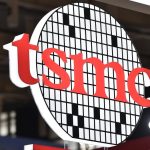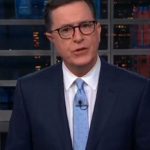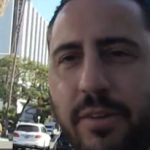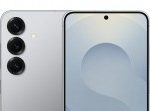
With bleary eyes, the world’s new giant space telescope has roused from slumber and glimpsed its “first light,” the initial step toward an ultimate goal of seeing some of the universe’s “first light.”
Huh?
When it comes to the profoundly powerful James Webb Space Telescope, the terminology can be downright dizzying, especially when astronomers use the phrase “first light” twice in the same breath to mean two different things. It’s a double entendre unique to this unparalleled observatory.
“First light” means starlight has traveled through the optics of a telescope, bouncing off all its mirrors to reach its detectors for the first time. NASA confirmed Webb achieved that on Feb. 3.
“First light” is also a term cosmologists use to describe the first generation of stars formed in the universe, thought to be a period just 300 million years after the Big Bang. Once aligned and calibrated this summer, Webb is expected to see some of the oldest galaxies, over 13.5 billion light-years away.
In fact, about two decades ago, when Webb was in its infancy, astronomers dubbed it the “First Light Machine,” said Marcia Rieke, principal investigator for the Near Infrared Camera aboard Webb. The nickname came from the telescope’s main purpose: to look back in time and see the origins of the universe.
But scientists decided the name “First Light Machine” was a bit of a stretch, overselling the observatory’s capability.
“We kind of had to get away from that moniker because the very first light would be a star,” Rieke told Mashable. “You need a telescope 20 miles across to detect the first single star.”
NASA surprised the astronomy community by releasing a first-light picture Friday. Its subject HD84406, an isolated sunlike star just 260 light-years away, is a relatively close neighbor to Earth. This was not the awesome, jaw-dropping spectacle the space agency has promised for years. Rather, the frame showed 18 random, blurry golden spots — some stretched and distorted into jelly beans, some ghostly apparitions — each a copy of the same star.

Credit: NASA
Relax, though. That doesn’t mean the telescope is broken, like a problem discovered with the Hubble Space Telescope, its legendary predecessor. It will take months to tune up Webb’s mirrors and instruments to perfection.
HD84406 can be found in the constellation Ursa Major. The star is a little too faint to see with the naked eye on Earth — a person needs binoculars to catch a glimmer — but it’s a bright object for Webb to fix its gaze on. In about four months, the 18 mirrors should be fully aligned, able to make the star look like one, clear star.

Credit: Universal History Archive / Universal Images Group / Getty Images
“The first images are going to be ugly,” said Jane Rigby, a project scientist. “It’s like we have 18 mirrors that are right now little prima donnas, all doing their own thing, singing their own tune in whatever key they’re in, and we have to make them work like a chorus.”
Each mirror segment is functioning like its own telescope now, explained Lee Feinberg, Webb’s optical telescope manager. The team needs to match the images within nanometers. For perspective, if the primary mirror were the size of the United States, each of the 18 segments would be the size of Texas, requiring the team to match them up with an accuracy of about 1.5 inches.

Credit: Sloan Digital Sky Survey, via Aladin
It’s too early to say there’s definitely not a flaw in Webb’s mirrors, Feinberg said, but so far things look normal.
NASA took a sharp left turn in its plans with Friday’s rollout of the “first light” image. In earlier conversations with reporters, Webb scientists and managers said they would hold back pictures until the summer because the test pictures are notoriously bad. It’s not the first impression they want to make.

Credit: Left: E. Persson (Las Campanas Observatory, Chile) / Observatories of the Carnegie Institution of Washington; Right: NASA / ESA / STScI
Perhaps the space agency didn’t want to repeat history: When NASA presented the first Hubble picture 32 years ago, the masses were underwhelmed. A photo of HD96755, a binary star 1,300 light years away, was a pixelated black-and-white smudge, barely better than a picture taken by a telescope on the ground in Chile.
“We want to make sure that the first images that the world sees, that humanity sees from this telescope, do justice to this $10 billion telescope,” and aren’t a “boring” star, Rigby said of Webb.
“For someone who’s worked on a project for 22 years, to see the light come through, it is beautiful.”
Contrary to previous remarks, NASA delivered early. Patrick Lynch, a spokesman for the agency, said NASA never made a formal decision on whether to release alignment images. The first science photos won’t come until the summer, but there will be “more updates” along the way, he noted.
Whether to make the first-light picture public was hotly debated, Rieke told Mashable: Though the space agency wants to be transparent about the fine-tuning process, some feared people would be reasonably crestfallen. Scientists, on the other hand, felt more than mere relief when Webb successfully collected HD84406’s photons.
“For someone who’s worked on a project for 22 years, to see the light come through, it is beautiful,” Rieke said.
The fuzzy picture might not be a disappointment after all.
On a subreddit about the telescope, the news that Webb had detected light from the star amazed user @I_love_limey_butts.
“So awesome! Just imagine some alien life forms 250 light-years away using our sun for system’s calibration lol.”
Powered by WPeMatico






